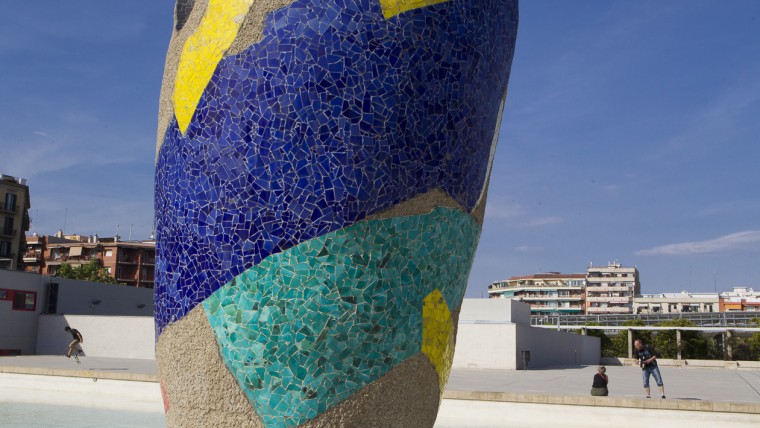
This is a park that offers visitors a surprise at each of its numerous entrances, as these give access to very different spaces both in structure and in use. It is a comfortable park to be in, where you choose your area according to what you plan to do.
Local residents meet up there every day in the pine grove, to chat away on the terrace of one of the kiosk bars or watch while the kids are playing in one of the six children’s play areas, the largest of which is accessible. The palm grove has pétanque courts for the sport’s aficionados and a large 720 m2 area for people to let their dogs run free in.

History
It is also the first park where a new use was given to urban spaces with obsolete facilities. Located on the site of the city’s old abattoir, it is a good example of the new urban-strategy model that was embarked on with the advent of democracy and which was based on gentrifying the periphery while reclaiming the city centre. The new arrangement of urban spaces allowed for a steady growth of an extensive and quality public space, of which this park is a prime example.

Art and Architecture
Standing on one side of the pool in the large square on the C/ Tarragona and C/ Aragó side of the park, there is a 22-metre-high sculpture by Joan Miró entitled Dona i Ocell (Woman and Bird), which dominates this large green space. It is made from trencadís (a broken-tile mosaic) and has become one of the park’s principal landmarks. The sculptor himself donated it to the city.
-
- Phone number
- Tel.: 010
-
- Titularity
- Public center
- Address:
- Carrer d'Aragó, 2
- Districte:
- Eixample
- Neighborhood:
- la Nova Esquerra de l'Eixample
- City:
- Barcelona
Timetable
| Periode | Dies | Hores |
|---|---|---|
Horari d'hivern De l'1 novembre al 31 març |
Cada dia | de 08.00 h a 19.00 h |
Horari d'estiu de l'1 d'abril al 31 d'octubre |
de 08.00 h a 21.00 h |
aproximada, en funció de
l'horari solar (tanquen
quan es fa fosc, al capvespre)
- Sections of this equipment
- Espai per a gossos deslligats al parc de joan miró Open in a new window
- Cistelles de bàsquet Open in a new window
- Àrea de joc infantil Open in a new window
- Àrea de joc infantil Open in a new window
- Àrea de joc infantil Open in a new window
- Àrea de joc infantil Open in a new window
- Àrea de joc infantil Open in a new window
- Pistes de petanca Open in a new window
- Àrea d'esbarjo per a gossos *tancada temporalment Open in a new window
- Taules ping-pong Open in a new window
- Wc públic Open in a new window
- Àrea de joc infantil Open in a new window
- Circuit esportiu Open in a new window
Esdeveniments
-
'Activa't als parcs' al Parc de Joan Miró Open in a new window
Permanent event

